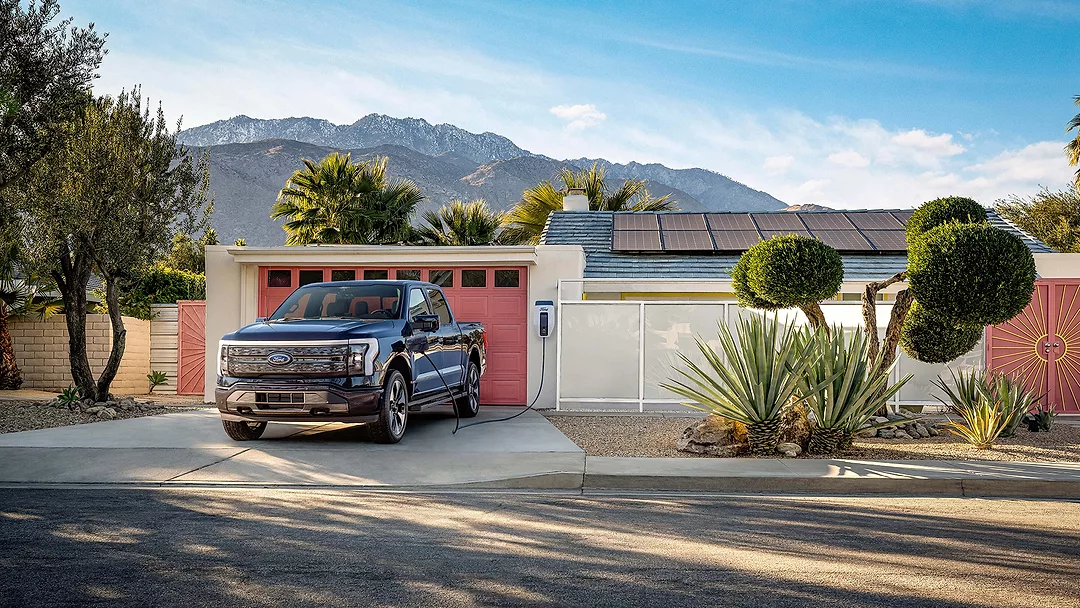A searing blue sky was overhead — the kind that often comes with sunny, cold days — as I fumbled with my gloves, my camera and my brittle fingers in January while taking shots of the new batteries and solar carports at the Siemens Microgrid Lab in Princeton, New Jersey. I thought I had it bad in 30 F weather, but my subject, grid project manager Xiaofan Wu, must have been even colder, posing with the equipment, his smile literally frozen on his face.
Still, he and a few others were very gracious, not only in waiting patiently for me to get my shots, then steering me smoothly indoors to a warmer place, but also in agreeing to meet me at all. With COVID-19 still raging, most of the 400 employees who normally work in the building were at home; it was largely empty. Some came in only to meet me. This was a team with the quiet confidence they are on to something that will become big — conducting research on the detailed hows and whys of the electrification of America.
That’s what Siemens and other progressive technology corporations are busy doing these days: figuring out how to continue to flourish in the rapidly changing world of energy and water by helping to design the future. It includes proving everything out with thorough research at highly advanced facilities at Princeton and in many other places around the country.
Solar, Batteries and Software
“This is a living lab where we can investigate and validate innovative technologies continuously in a real environment, resulting in a clear blueprint for a more efficient and flexible microgrid system that can be replicated all over the world,” Wu explains.
The facility includes a two-story, 100,000-square-foot 1988 office building; extensive solar carports and electric vehicle chargers in the parking lot; a 1,000-kilowatt battery; and other smart software and devices — making it all work together to cut energy use and greenhouse gas (GHG) emissions.
From the company’s point of view, in a perfect world, the innovative equipment and processes would all be Siemens products, but they have partners and requirements. The Department of Energy’s national laboratories, the University of Princeton and a handful of unnamed collaborators are involved, and all parties seem to be thriving from the synergies.
Siemens itself is saving up to 80% on energy, making huge cuts to its GHG footprint and filing more than a thousand patents per year.
What is it studying? Not surprisingly, the organization is further developing building management systems analytics, dashboards and microgrid control software. These systems find efficiencies and security protocols within the interplay between solar, batteries, grid, microgrid, digital twins and, in cases where the public grid is perhaps unavailable, a system that can be islanded.
A real-world example took place shortly after the establishment of the lab in 2020 when the team learned that Tropical Storm Isaias would hit New Jersey. At the time, the system offered Economic Mode, which focuses on reducing the cost of energy; Green Mode, which maximizes the use of clean energy options; and Reliable Mode, designed for emergencies.
The team selected the latter for testing during the storm. This ensured that the battery’s state of charge was increased to maximum due to the possibility of a utility outage, essentially doing the job of an uninterruptible power supply and providing emergency power.
Wu notes that the system can provide enough emergency power for all the building’s operations from two to five hours — two hours with everything operating and five hours with only critical needs being met, such as HVAC, data processing and security systems.
Smart-Home Market Soaring
Costs for microgrids have declined by 25% to 30% since 2014. According to Researchandmarkets.com in Dublin, the global microgrid market will grow from US $24.6 billion in 2021 to US $42.3 billion by 2026. Electricity storage will grow even faster, doubling six times from 2016 to 2030, notes research firm Bloomberg NEF. In the United States, homeowners and business owners have installed about a half-million rooftop solar systems a year.
My preoccupation is the environment, but the changes in the way the country builds are driven more by value than climate mandates. Some of the reasons homes and business buildings on this continent are evolving so fast is because modern practices create buildings that cost less to operate, are healthier to live in, and are more convenient. The dramatic increase in smart-home technology underscores this reality.
At the January AHR Expo in Las Vegas, I asked Gene LaNois from Google how many Nest thermostats have been installed. He gave me a one-word answer: “Millions.”
He said Google believes the thermostat will be the key hub for intelligently connected homes and buildings as we move into the electric era. Most people who work in the smart-home industry can understand this belief; however, with the many alternative hubs coming onto the market, it still may not be a given. HVAC engineers can try to protect their turf by deliberately choosing smart thermostats and designing systems around them. In the residential sector, it appears that’s already happening.
The consensus between Mordor Intelligence, IMARC and Berkshire Hathaway seems to be that smart thermostat sales will continue their torrid sales pace, growing about 23% each year for the foreseeable future, hitting a total market size of about $7 billion by 2026 or 2027. When including the related devices and services, the smart-home market is far larger, at about $100 billion now and expanding to $300 billion or $400 billion by 2028.
And, of course, the worldwide electric heat pump market will grow from US $53 billion in 2020 to US $85 billion in 2028, notes Global Market Insights.
In 2020, as part of what it calls a “connected world” strategy, Johnson Controls acquired smart-home manufacturer Qolsys. This year, it introduced a new Zigbee mesh router that allows you to communicate with up to 35 wirelessly enabled equipment controllers at distances of 250 feet.
It’s also talking up Metasys IP equipment controllers with Pandemic Pressurization mode for instant high levels of ventilation flush and promoting its 300% investment increase in heat pumps and natural refrigerants.
It will undoubtedly be messy as we move toward a complex new electrified and electronic world, but a few technological developments are evolving into good news stories.
What the Siemens Lab at Princeton is verifying is that smart software with data collection and analytics is quickly proving it can create efficiency improvements, especially with microgrids that can share and optimize the available energy. And as we all know, fast electronics themselves also realize some gains.
Another positive point is that because they move rather than generate energy and employ the magic of refrigeration principles, heat-pump devices are three or four times as efficient as fossil-fuel devices. That’s no small impact.
Thirdly, some dark horses that I hoped would emerge have been moving quite quickly, namely, vehicle-to-grid (V2G) and virtual power plants.
Ford’s New Electric Pickup
Ford says its new electric F-150 pickup truck will be V2G-capable to power your house in an emergency. As we know, this resonates in places such as Texas, where the deep freeze snap in 2021 left 250 dead and cost $200 billion in broken pipe, HVAC and plumbing equipment and damaged infrastructure.
Electric bus batteries have even more available power than pickup trucks, and Lion has now shown that its electric buses can be deployed in emergency situations to power school buildings or even utilities during peak demand. The company’s buses all come equipped with V2G technology. In late 2020, it announced it had used electric school buses to supply power to White Plains, New York, Con Edison customers in a pilot project.
We want 300 miles of range when buying an electric vehicle (EV), but it represents a lot of power relative to the needs of homes and other buildings. Engineers see an opportunity for optimization. Pilot tests are springing up everywhere because the global fleet of EVs is growing fast. Automotive News reported 378,466 U.S. EV registrations from January to October 2021, 94% more than in 2020.
Worldwide, fossil-fuel car sales are declining. EV sales were up 98% in 2021; more than 4 million all-electric vehicles were sold last year.
Virtual Power Plants
In addition to bus batteries, Con Edison also is testing the aggregation of homeowners and their Tesla Powerwall batteries in a 300-home virtual power plant project with Swell Energy in Queens, New York. The 500-kW resource can be accessed, or a part of it can be, by the utility according to pre-set rules and flexible schedules during times of peak demand. The idea is to optimize unused power to reduce demand on the grid during peak periods.
The hope is to expand both this project and the concept by adding similar projects around the state. It’s efficient and potentially helps avoid the building of additional peak power infrastructure, especially fossil-fuel-powered generation. New York is targeting 3,000 megawatts of installed energy storage capacity by 2030 and a zero-emissions electricity sector by 2040. Similar projects have popped up in California and other U.S. states, Canada and Australia.
Virtual power plants and V2G were still back-of-the-envelope technology concepts as recently as two years ago. When I see them already proliferating and working well in numerous North American cities, it somehow makes up for shivering while shooting pictures of Siemens solar carports on a frigid January afternoon.
Things are moving fast. Companies who want to hedge their bets on future market share should ensure they offer not only HVAC but also electronics and electrical engineering expertise. A merging of these technologies and services may be in the cards for the future.






